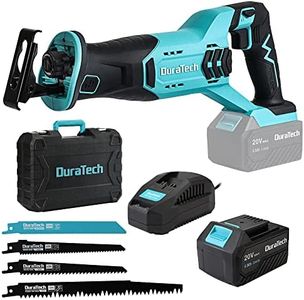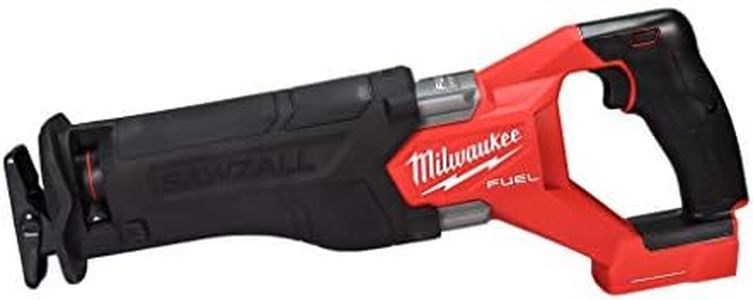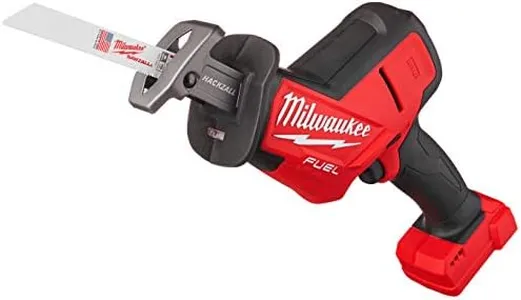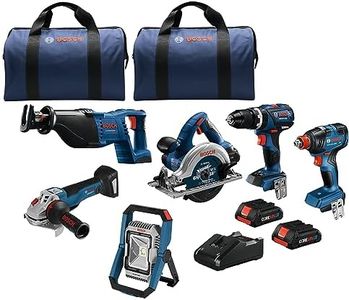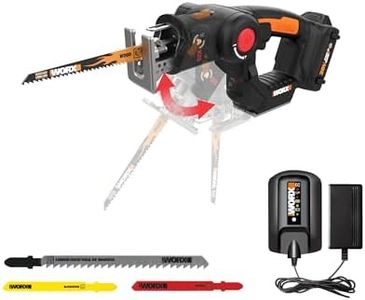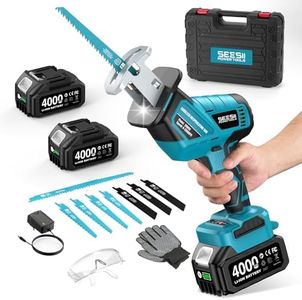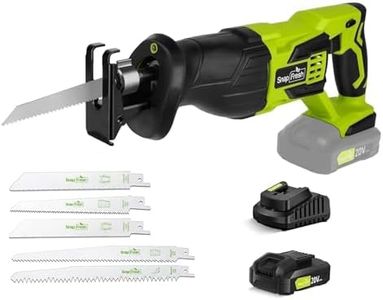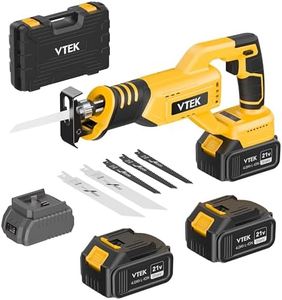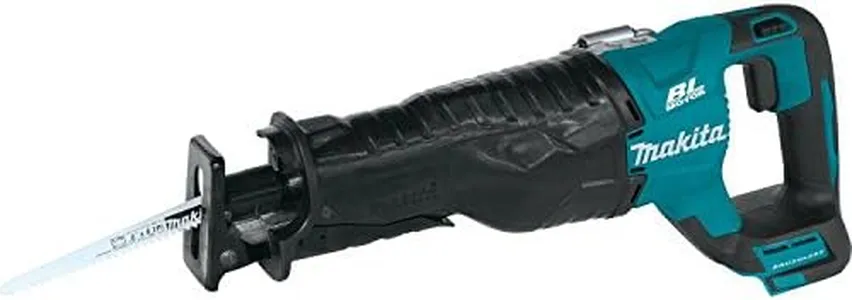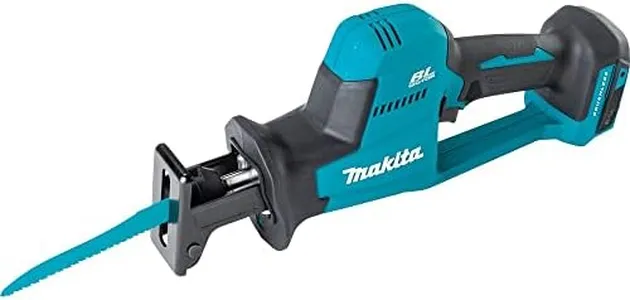10 Best Cordless Reciprocating Saws 2025 in the United States
Our technology thoroughly searches through the online shopping world, reviewing hundreds of sites. We then process and analyze this information, updating in real-time to bring you the latest top-rated products. This way, you always get the best and most current options available.

Our Top Picks
Winner
DEWALT 20V MAX Reciprocating Saw, 3,000 Strokes Per Minute, Variable Speed Trigger, Bare Tool Only (DCS380B)
Most important from
12457 reviews
The DEWALT 20V MAX Reciprocating Saw (DCS380B) is a solid choice for those in need of a reliable cordless saw, particularly for home improvement enthusiasts and professionals tackling wood-cutting tasks. One of its standout features is the impressive stroke speed of 3,000 strokes per minute, which contributes to fast and efficient cutting. The variable speed trigger allows for precise control over the cutting speed, making it adaptable for different materials and applications.
The 4-position blade clamp offers versatility in blade positioning, enabling flush cuts and easy, tool-free blade changes. This means you can switch out blades quickly, which is essential when you need to change tasks on the fly. Additionally, the rubber comfort grip enhances user comfort during prolonged use, which is a big plus for those long projects.
There are a few drawbacks to consider. While the saw is lightweight at 5.3 pounds, it does not come with a battery or charger, meaning you'll need to invest in these separately if you don't already have compatible DEWALT equipment. This could add to the cost for beginners or those looking for a complete set-up out of the box. Another aspect is that while the saw features a pivoting adjustable shoe for better depth control, it may require some practice to master. Users might find that they need time to get accustomed to the tool's handling, especially if they are new to using reciprocating saws.
Most important from
12457 reviews
Milwaukee M18 Fuel Sawzall Brushless Cordless Reciprocating Saw - No Charger, No Battery, Bare Tool Only
Most important from
1140 reviews
The Milwaukee M18 Fuel Sawzall Brushless Cordless Reciprocating Saw is a powerful tool designed for users who need mobility and efficiency. It operates on an 18-volt battery, which gives it a good amount of power for heavy-duty tasks. The brushless motor enhances its efficiency and durability, making it a reliable choice for various cutting jobs. At 6.8 pounds, it's relatively lightweight, which helps reduce fatigue during longer projects.
The wear-resistant lever actuated blade clamp allows for quick and easy blade changes, and the built-in LED light is a handy feature for working in dimly lit areas. Additionally, the metal reinforced battery connection ensures good battery retention and longevity. However, it’s important to note that this model is sold as a bare tool, meaning it does not include the battery or charger, which will need to be purchased separately. This could be a drawback for those who don't already own compatible Milwaukee batteries.
The absence of variable speed control may limit precision in certain applications, and it lacks orbital action which can be beneficial for faster, aggressive cutting. Despite these drawbacks, the saw is particularly well-suited for professionals and avid DIYers who need a durable and efficient reciprocating saw for metal cutting.
Most important from
1140 reviews
Milwaukee 2719-20 M18 FUEL Hackzall (Bare Tool), Red, Black,
The Milwaukee 2719-20 M18 FUEL Hackzall is a cordless reciprocating saw that stands out for its powerful performance and user-friendly design, making it a great choice for both DIY enthusiasts and professionals. One of its key strengths is the POWERSTATE Brushless Motor, which delivers impressive cutting speed and efficiency, allowing you to tackle tough materials with ease. The 7/8 inch stroke length facilitates quicker cuts by removing more material with each stroke. Additionally, the one-handed design enhances control and versatility, making it easy to maneuver in tight spaces.
The REDLINK Plus Intelligence system is another highlight, as it optimizes performance and protects against overload, ensuring the tool lasts longer. This, combined with the REDLITHIUM battery technology, means you'll get more work done per charge and enjoy extended battery life compared to many competitors.
However, there are certain aspects to keep in mind. The tool is a bare unit, meaning it does not come with a battery or charger, which could be inconvenient for new users who lack these resources. Weighing nearly 4 pounds, it might be slightly heavier than some other models, which could be an issue for prolonged use, especially in overhead applications. Lastly, while it excels in cutting metal and other materials, its efficiency in softer materials may not be as pronounced, so users should consider their specific needs.
Buying Guide for the Best Cordless Reciprocating Saws
Choosing the right cordless reciprocating saw can make a significant difference in your cutting tasks, whether you're a professional contractor or a DIY enthusiast. These versatile tools are used for a variety of applications, including demolition, pruning, and cutting through different materials like wood, metal, and plastic. To find the best fit for your needs, it's important to understand the key specifications and how they impact the performance and usability of the saw.FAQ
Most Popular Categories Right Now
